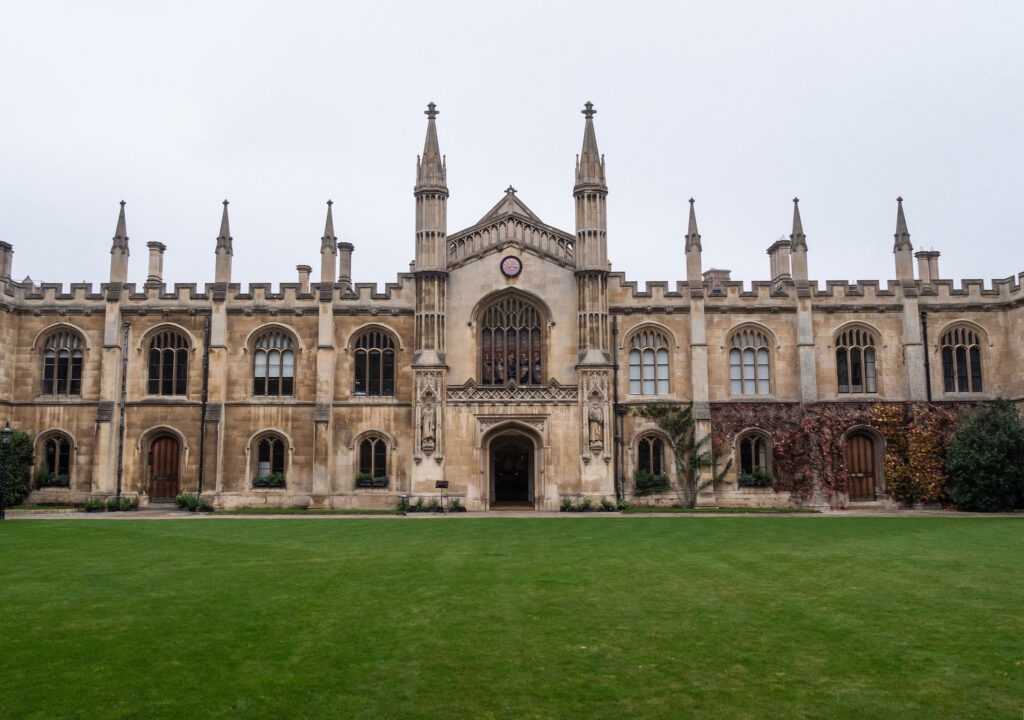Guide to US Applications • Undergraduate
The Ultimate Guide to Undergraduate Courses in the US
POSTED ON 05/24/2023 BY The Red Pen

US colleges are undoubtedly popular among international students. In a survey conducted by the Institute of International Education with 550+ higher education institutions in the US, 65 percent of the universities revealed that they had seen a surge in international student enrolments for undergraduate courses since the pandemic. But before you apply, let’s understand US undergraduate curricula.
Here’s a comprehensive guide to undergraduate courses in the US:
What is credit?
Credit is the basic measurement unit for a course. Every college counts credits differently, but most will expect you to earn a minimum number to complete your bachelor’s degree. International Baccalaureate exams, credit-bearing summer programmes, and pre-university courses can count against your credit. Here’s more information on the credit system used by universities for undergraduate courses in the US.
What is a major?
A major is your primary academic focus or area of study. US universities use the term “concentration” while referring to majors. A major requires you to complete a set of required and optional courses to gain a solid foundation and specialised insights. The exact number of courses vary as per university and type of major.
Types of majors you can pursue for undergraduate studies in the US
While you can specialise in a single discipline, you may also pursue the following:
- Interdisciplinary major: Interdisciplinary majors let you combine two or more conventional academic disciplines into a personalised study area. Stanford University, for example, offers a comprehensive array of interdisciplinary options to undergraduate students. These programmes explore converging fields of interest such as science, technology and society or modern thought and literature.
- Double major: If you have an appetite for learning, you can select a double major. For one bachelor’s degree, you can major in two fields. For example, you can pursue a Bachelor of Arts degree in psychology and English literature. A double major allows you to become familiar with two sets of values, views and vocabularies, making you a more competitive candidate in the job market. That said, it’s far more rigorous and requires you to work harder on a tighter schedule, leaving you little or no time to explore other interests.
- Dual degree: A dual degree is when you study two fields and receive two degrees (one per discipline). Suppose you studied psychology and business in a dual degree programme; you’d graduate with a Bachelor of Arts (BA) in Psychology and a Bachelor of Business Administration (BBA).
Choosing a major for undergraduate studies in the US
Most US universities allow students to explore subjects and only require you to declare your major at the end of sophomore year. Furthermore, you have the freedom to change your course of study after you declare your major. Here are a few tips for selecting a major:
- Discover your passion and interests by participating in multiple extracurricular activities in high school.
- If you’ve decided on your major before securing admission, look at universities renowned for the discipline you wish to pursue. For example, if you’re aiming for a degree in computer science, you may want to consider Carnegie Mellon University or Massachusetts Institute of Technology.
- Reach out to faculty members who teach a particular discipline to understand what is expected.
- Consider future careers and the earning potential of a major. For example, starting salaries for STEM graduates are higher than for liberal arts graduates. But there’s no point in pursuing STEM if you don’t have the potential to succeed in those subjects.
- Explore fields that align with your strengths. For example, if you’re good at writing, consider journalism.
What is a minor?
A minor is your secondary area of academic specialisation and includes courses apart from your major. US students typically pursue a degree with a major and minor. The good news is that a minor is less rigorous than a major and only requires four to six courses. Before choosing a minor, check if you meet the academic requirements. Some minors may need you to complete prerequisite classes. Every school has its rules, and talking with an advisor can help you make informed decisions.
Choosing minors for undergraduate studies in the US
While minors may not be compulsory for your undergraduate course, we recommend selecting one as it will offer depth and scale to your education. There are two ways of choosing your minors:
- Selecting minors to support your major: If you pick a minor that aligns with your major, you can deepen your understanding of your bachelor’s degree programme or experience new areas not covered by your courses. For example, you can major in marketing and minor in graphic design or select finance as your major with economics as your minor. Both minors complement the majors and amplify your degree. Taking this route is undeniably pragmatic and may help you with your career.
- Selecting minors unrelated to your major: You can also choose a minor outside your major. Doing so can help you identify new areas of specialisation or help you develop unique skills and qualify you for a wider variety of career opportunities. For example, you could major in business and minor in art history. Doing so would enable you to apply for executive roles at a museum, in academia, or even open your gallery.
What are electives?
Elective courses are not required for a student’s major but can be taken to fulfil the general education requirements or to explore other interests. Elective courses can be found in various subjects, such as the humanities, social sciences, natural sciences, and mathematics. The number of elective courses that students can take also varies from school to school. Students should consider their interests and future career goals when choosing elective courses. If they are unsure what they want to major in, taking various elective courses can help them explore different options. Elective courses can also help students develop their critical thinking skills, learn new things, and meet new people.
What is the core curriculum for undergraduate courses in the US?
In addition to your major and minor, most US colleges expect you to complete their core curriculum or general education requirement within the first two years.
The core curriculum has little or nothing to do with your major. For instance, while you may want to major in engineering, during the first two years at college, you will take a standard set of classes like writing, foreign languages, social studies and natural sciences. This curriculum, therefore, promotes critical thinking, effective communication, problem-solving and several soft skills desired by future employers. The core curriculum is the cornerstone of education at Columbia University. Also, a significant portion of the undergraduate education is delivered at the Massachusetts Institute of Technology via its signature core curriculum.
The total credit requirement for most undergraduate courses in the US is divided into your major, minors and general education courses. You can earn pending credits by taking extra classes to support your major, completing a double major, or picking a minor. But the distribution of credits within the core curriculum depends on the university. Take a look at the examples in the table below:
| New York University | Bowdoin College | Carnegie Mellon University | |
| Economics
Total Credits – 128 |
Psychology
Total Credits – 32 |
Engineering
Total Credits – 379
|
|
| Required credits for core | 40 credits | 10 credits | 72 credits |
| Required credits for major | 40 credits | 10 credits | 182 credits |
| Required credits minor | 25 credits | 6 credits | 52 credits |
| Required credits for possible electives | 23 credits | 6 credits | 70 credits |
What is the open curriculum for undergraduate courses in the US?
The open curriculum enables you to personalise your study programme under the guidance of faculty advisers. It allows you to choose your subjects and puts you in charge of your education. Designed for those who are sure about their interests, it enables you to explore various academic areas. The open curriculum creates a unique learning culture where students display unusual motivation, innovation, and self-direction. But the freedom and choice comes with considerable responsibility and accountability, which may only suit a few students. Besides your major, colleges with an open curriculum may still require you to take a few mandatory courses. Here are the general requirements for some of the undergraduate courses in the US offering an open curriculum:
| Open-Curriculum Colleges | Mandatory Courses |
| Amherst College |
|
| Brown University |
|
| Grinnell College |
|
| Hamilton College |
|
| Hampshire College |
|
| Smith College |
|
| University of Rochester |
|
| Vassar College |
|
| Wesleyan University |
|
What are the key differences between the core curriculum and the open curriculum?
| Core Curriculum | Open Curriculum |
|
|
|
|
|
|
Now that you know the types of undergraduate curricula available at US colleges, create a shortlist of US universities you wish to attend. For further guidance on the undergraduate applications, get in touch with us. Our US undergraduate admissions team looks forward to helping you.




